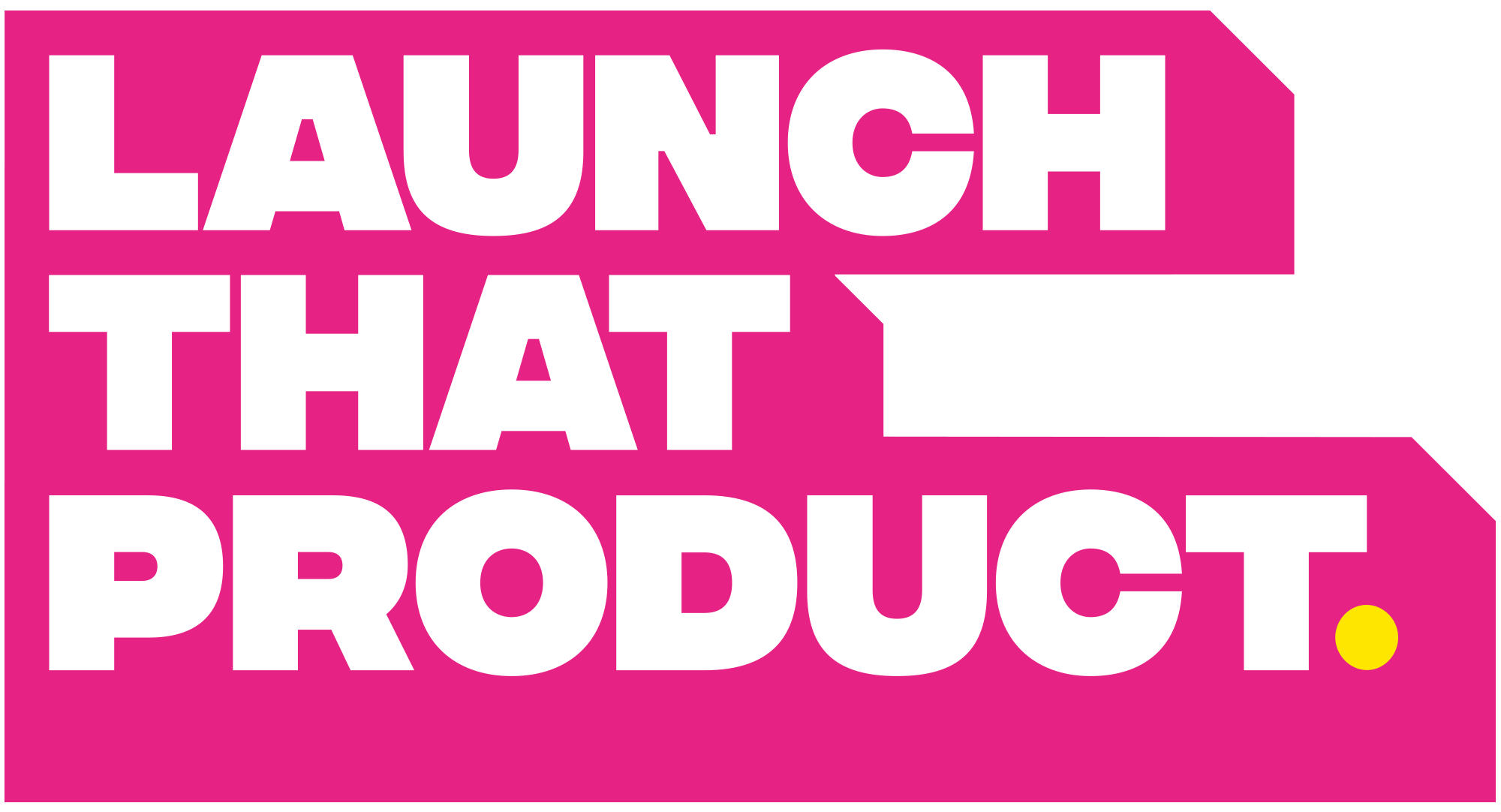So where do I start? A step-by-step guide to developing your unique value proposition
Do you want to better explain the value of your product or services? Are you looking for a way to connect with potential customers and build trust with them? If so, then you need to understand what a value proposition is and how it can be used to your advantage. In this article, we’ll explore what a value proposition is, how it works, and how you can use it to increase sales and conversions.
Let's go......
Introduction - What is your value proposition and why is it important?
A value proposition in summary is a statement or a tagline about what makes your product or service unique and valuable.
However, it needs to be deep-routed and properly thought through putting your target audience at the heart of it. It should focus both on your audience's needs, and competitors that are already addressing these needs, be concise, clear, and easy to understand focusing on benefits rather than features as well as addressing the mental biases your audience may have.
To develop a compelling value proposition, start by;
- Identifying your target audience and conducting research into what they want from you.
- Identify your unique selling proposition
- Research who else serving this audience with a similar offering and how
- Develop a compelling message that sets you apart from the competition.
In summary, your value proposition should explain why customers should choose to work with you rather than your competitors. It should be clear and concise, with a straightforward explanation of how you differ from the competition.
With your audience at its core it's what your brand represents, the products, solutions, and benefits you offer, and the experience your audience will encounter whilst interacting and buying from you.
When potential customers read it, they should understand why they would benefit from doing business with you. Being consistent and meeting your customer's expectations is ultimately the key to your success.
Overview - Understanding the benefits of a value proposition
A strong value proposition is an essential element of a successful marketing strategy. Understanding the potential benefits of a value proposition can help you explain it to your customers. A value proposition offers a unique statement that clearly identifies the value your offering provides to your customers.
This statement should be:
- Concise and easy to understand.
- Tailored to your target audience
- Focus on the positive outcomes associated with your product and service.
Remember: Its purpose is to explain the value that you are offering and why customers should choose you over your competitors.
In short by understanding the benefits of a value proposition, you can ensure that your message resonates with your target audience and drives sales.
Now that you hopefully understand the importance of a value proposition, let's go through the process step by step..
STEP 1 - Understand Your Target Audience - Who are you doing this for?
To effectively communicate your value proposition to your target audience, it is important to first understand who your ideal customer is and be as specific as you can.
Knowing who your target customers are is key to creating a successful value proposition.
Remember: Sell to everyone, sell to no one.
Having a product that is tailored to how your product is going to relieve pain and increase the gain of a specific audience is key.
Let's put it this way, would you throw a dinner party without knowing who your guests were? No? Then why would you launch a product or a service without knowing who you were looking to serve? The menu, the music, the decoration, there is so much to consider.
Researching your target market will therefore help you gain insight into their needs, wants, and desires and solve their pain point. This information can be used to create a tailored message that resonates with your audience. Additionally, understanding your target market will enable you to identify any benefits they may not be aware of in relation to your offering. By understanding your target market, you can create a value proposition that speaks directly to their needs and addresses their biases.
STEP 2a - What problem are we solving for them & What is their pain point?
In short, what benefit does your product deliver whilst reducing or overcoming the fears of your audience? And how will you do this better than your competitors? When we talk about pain points it's sometimes difficult to understand what we actually mean.
So what do you mean by pain point?
Here are some examples of pain points
- The existing product or service doesn't work
- It takes too long / I don't have the time
- Quality is poor/inconsistent
- It's too complicated to make it work
- It doesn't really address my needs
- It's too expensive
- It's not unique enough
- It doesn't make me feel...sexy, powerful, attractive
- There doesn't seem to be a solution specifically catered to me
- It takes too long to work
- It requires too much effort
So how do we address these concerns? We do this by putting together a value proposition that addresses these better than the competition whilst directing this to your specific target market.
STEP 2b - Conduct Market & Competitor Research - Specific needs and who else is addressing these?
Conducting market research is an important step in the process of creating a great value proposition. This will help you to understand the needs of your target customers and identify how you can meet those needs. It will also give you insight into what your competitors are offering and how you can stand out in the market.
Market research can include surveys, focus groups, interviews, and analytics. By understanding what your target customers are looking for, you can create a value proposition that is tailored to their needs.
Fun fact:
If I'm looking to launch a product, I use sites like Amazon and my competitor's sites and read through the reviews. More importantly, look at the bad reviews, these tend to give me a lot of insight into how I can produce a better product.
For both service and product-based businesses, I would highly recommend reading through Subreddits which are very useful. Also, consider joining relevant Facebook groups and asking members questions about their pain points and how they are currently resolving them.
If your business is already up and running then ask your customers how you could improve and why they bought from you in the first place.
Value considerations - So how do I deliver value?
Here are 3 examples of benefits;
1. Price - Don't confuse price with value
Remember, price and value are not directly correlated although price can be one of your differentiators. The idea of true value is how you absolutely delight your audience whilst succinctly tailoring it to their needs. Value, therefore, is most commonly a combination of several value considerations and not necessarily price.
Ask anyone who has ever paid over $700 for a plastic Louis Vuitton handbag.
Whilst on the subject of price, I thought I would throw in a nugget of wisdom. The number 1 rule about price; go high or low, but don't sit in the middle. You will get priced out. If you go low then make sure your business is designed for extreme efficiency and understand you are in the game of offering low prices. Think of low-cost airlines like Ryan Air. Apart from making sure that their planes are safe and will get you from one destination to another alive, everything else is about efficiency and no thrills.
Conversely, a night at the Ritz will cost you a tad over $600. However, no expense is spared. Both offer value to their respective customers but have very different pricing strategies.
2. Time/Speed, Convenience, Quality & Choice
Is your product saving someone time and convenience? Amazon would be the obvious example here. With hundreds of thousands of products, thousands of reviews and next-day delivery it's no wonder Amazon has grown to be one of the world's retail giants.
3. Effort & Friction
Is your product removing friction? By friction, we mean something that makes buying a product or service difficult.
Before Uber, we had to call the taxi office or wait to haul one by the curbside. Then we had to make sure we had sufficient cash and ultimately we didn't know whether the car we were about to get into was licensed or driven by a driver that had any priors.
The key to resolving a pinpoint and delivering true value is to remember that:
People want to resolve their pain point in as little time with as minimal effort as possible
STEP 3 - Identify Your Unique Selling Points
Once you have a clear understanding of your target audience and have conducted market research, it is time to identify the unique selling points that will position you at the forefront of your target audience's mind. This is where you need to differentiate yourself from the competition.
I meet many clients who try to enter specific markets inspired purely by their competitors' efforts with little or no regard for who their actual audience is and what problem they are solving for them. Differentiating for the sake of it is not a sound strategy.
Differentiating for the sake of it is not a sound strategy.
Think about what really sets you apart and why your customers should buy from you instead of someone else and make sure price alone is not the differentiating factor. Differentiation on price alone is usually not a good strategy unless you have very deep pockets. If you don't have a huge marketing budget and can't afford to shout your way through the noise then you may need to re-consider your purpose and why you exist.
In other words, creating reasons why your audience should choose you over your competitors should be more than just price, a fancy logo or a lukewarm offering that serves your ego over your customer's needs. Don't be different for the sake of being different but for genuine reasons that will provide more value to your audience whilst setting you apart from your competitors.
Ask yourself:
- What are the key benefits that you can offer that no one else can?
- What is the value you can provide that will make people choose your business over the rest?
- Will what I offer, provide a faster result for less effort?
These are the key areas that you need to focus on whilst creating your unique value proposition. Once you have identified the unique selling points, it is time to develop your unique value proposition.
STEP 4 - Developing Your Unique Value Proposition
Once you have identified your target audience, conducted market research, and determined your unique selling points, it is time to develop your unique value proposition.
Remember, this is a statement that outlines:
- The benefits of your product or service
- Deals with the mental bias of your audience
- How it stands out from the competition
Your value proposition should be concise, easy to understand, and unique to your business.
Consider the features and benefits of your offering that are most appealing to your target audience, and use these to create a compelling message that will draw people in. Make sure to include the relevant facts and figures that will back up your claims, such as research data or customer testimonials. By creating a clear, concise value proposition that speaks to your target audience, you will be able to effectively communicate the value of your product or service and differentiate yourself from the competition.
Social proof and customer testimonials are not only great at illustrating how your product helped others but are also effective in helping to build trust
STEP 5 - Create a Compelling Message - Your Value Proposition Statement
Creating a compelling value proposition statement is an important step in marketing your product or service. It's essential to make sure your message is clear and concise and that it resonates with your target audience. The best way to do this is to understand your customer's needs and wants and craft your message to address them. Using the market research you did earlier will really help make sure that your narrative is spot on.
It would help if you also considered the tone and style of your message to ensure it stands out and is memorable whilst being in line with the tone of voice of your brand. Consider using stories, metaphors, and other creative techniques to make your message more compelling and engaging.
Additionally, use visuals to help illustrate your message and make it more accessible. By developing an effective and compelling message for your value proposition, you will be able to more effectively communicate the benefits of your product or service to your customers.
Fun Fact:
In my experience value proposition that addresses your audience's fears and pain points tends to be a lot more effective.
Oh wise Reuben, so what do you mean by this? Let me explain dear reader...
Have you ever heard a brand tell you how crap they are? No? I didn't think so.
Everybody claims they are the best, the shiniest, the fastest. This strategy makes cutting through the noise difficult. Instead, focus specifically on addressing and reducing the reasons why your potential customer wouldn't buy from you. Place this in the heart of your narrative. It will give you your competitive edge and tremendously help with conversion.
Let me elaborate...
The key to making a compelling product is not just to inflate the benefits of your product i.e 'Look how great we are' but to understand your audience's fears and anxieties and focus on addressing them since mental bias will be the main reason why someone will opt out.
The key to making a compelling product is not just to inflate the benefits of your product but address the mental biases your audience will have (the reasons why someone wouldn't buy from you) for opting out
Let's say you are in the business of selling electric cars. You can sell all the benefits of owning an electric car alongside your competitors but if you were able to produce a car that addressed your audience's fears like being able to recharge in less time, being able to drive longer mileage per charge, cheaper servicing etc then you would have a far more compelling value proposition.
'NEW ELECTRIC CAR CO., charges in 5 minutes, drives for 500 miles!'
Now that would be a compelling offer!
STEP 6 - Test & Refine Your Value Proposition
Refining your value proposition is an important step in ensuring that the message you are putting out is clear, concise, compelling and most importantly relevant.
When refining your value proposition, take the time to review the feedback you have gathered from your target audience, as well as any market research data you have collected. Use this information to adjust your message and ensure that it resonates with your customers. Follow your assumptions but your research and data should ultimately be your guide.
Additionally, consider refining your messaging to better appeal to a particular segment of your target audience, such as highlighting special features or benefits that would be appealing to them. Furthermore, review the language you are using in your messaging to make sure that it is accurate, clear, and easy to understand.
Finally, consider testing different versions of your value proposition to determine which one resonates best with your customers. By taking the time to refine your value proposition, you can ensure that you are putting out a message that will stand out from the competition and attract more customers.
Examples of how to test your value proposition;
Once you develop an effective value proposition, it is important to test it to make sure it resonates with your target audience. You can test your value proposition in a variety of ways;
- Customer surveys - Great for general feedback and should be done regularly
- Focus groups - Research various narratives to see how they resonate
- A/B testing - Great for narrowing down to see which narrative resonates more. This will allow you to know if you are on the right track and if there are any adjustments that need to be made.
- Customer feedback - Does it accurately reflect the unique benefits of your offering
STEP 7 - Incorporate your value proposition into your branding
Once you have finalized a value proposition that resonates with your target audience, it is important to incorporate it into your branding. This includes using it in all of your marketing materials and communications. This can help to ensure that customers understand the value you are offering and how it will benefit them.
It can also help to reinforce your message and make sure that customers are reminded of your value proposition each time they interact with your brand. Additionally, incorporating your value proposition into your branding can help to differentiate your company from competitors while ensuring that customers understand the value of your products or services.
SUMMARY - Let's put it all together...
Here is a very simple example of what a nutritionist could do who was looking to narrow/define his/her offering/target audience
STEP 1 - Understand Your Target Audience - Who are you doing this for?
New mums who want to lose weight
STEP 2a - What problem are we solving for them & What is their pain point?
I hate being overweight because
- I don't feel attractive
- I always feel tired
- I can't fit into my clothes anymore
- I've lost my confidence
- I feel like i'm letting myself go
STEP 2b - Conduct Market & Competitor Research
i) Now let's say we conduct research and this highlights that there is a subcategory of women who find it difficult to shed weight after childbirth. We also discover that they struggle to find the time to care for their child and see to their own needs. They may have tried diets in the past but since their circumstances have changed they no longer have the time or inclination to revisit these.
Furthermore, our research has highlighted the following mental biases whilst trying to lose weight:
- I've tried many diets and they haven't worked
- I can't make drastic changes to my routine
- I don't have the time to go to the gym
- I don't have the budget to buy specific food
- I don't know where to shop to buy specific food
- Will cooking for my diet take a lot of time and energy?
- Juggling parenting whilst trying to adjust to my new life as a new mum is challenging
ii) How are current competitor nutritionists addressing this problem:
We do some research and find that most nutritionists are taking a general approach to losing weight with a narrative of "I will help you lose weight fast" without considering specific circumstances or addressing mental bias
To get a full picture of our competitive landscape we also consider alternative ways of losing weight like joining gyms and attending classes. However, since these require time and effort we conclude that these are not immediate threats to our value proposition.
STEP 3 - Identify Your Unique Selling Points
Devise a (diet) plan that's quick and convenient whilst specifically targeting new mums
STEP 4 - Developing Your Unique Value Proposition
I help new mums lose weight in 4 weeks by only changing one ingredient in their diet and without needing to join a gym!
STEP 5 - Create a Compelling Message - Your Value Proposition Statement
New Mum? Jump back into your old clothes and feel energized again with our REALLY simple diet and no gym plan
Fun fact: Notice how we focus on the outcome and not the method. This is far more effective and helps your audience imagine what the outcome could be if they were to use your product or service
STEP 6 - Test & Refine Your Value Proposition
Let's say that we conduct research and our findings suggest that feeling confident resonates more with our target audience than being energized. Furthermore, we find that the word diet suggests a full-on regime change whilst raising more questions than answers and since our solution is literally removing one food type, we amend our narrative to the following;
New Mum? Jump back into your old clothes and feel confident again with our NO DIET and NO GYM plan. Guaranteed results in 4 weeks!
Continuous customer feedback will further help refine your proposition so it is important to have feedback loops in place to allow this to happen.
STEP 7 - Incorporate your value proposition into your branding
Here you could use strong 'before and after' visuals of a mum holding her child whilst looking confident and happy. You could run 'mums lose your tums' campaigns which would help start a movement and get the word around.
Your site would serve as a hub and revolve around articles that gave mums hope and encouragement and how to cope with parenting whilst finding ways to spend some time on themselves. You could then share snippets of these on social media channels to help position you as an authority and watch your client list grow.
Conclusion - My Final Thoughts....
Writing your value proposition is essential because it sanity checks who you serve and how you will serve them. This is ultimately why you exist. It will also help separate you from your competition and really make you think about every aspect of your offering whilst putting your audience first.
I hope you found this article useful. I put a lot of time and energy in writing these and would love your feedback. This ultimately helps me improve and serve people like you better.
If are looking for ways to start or grow your business I offer 1 to 1 sessions, which my current clients have found invaluable.
Feel free to drop me a line reuben@launchthatproduct.com or book a free 15 minute discovery call by clicking >HERE<



